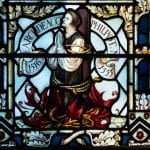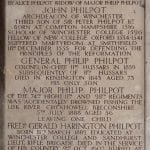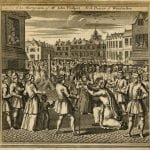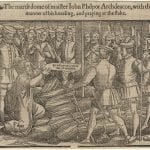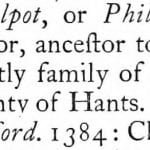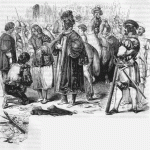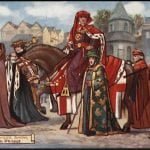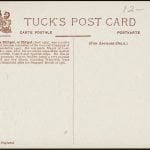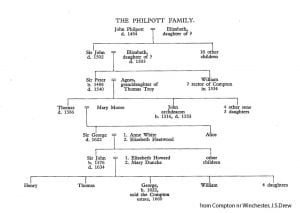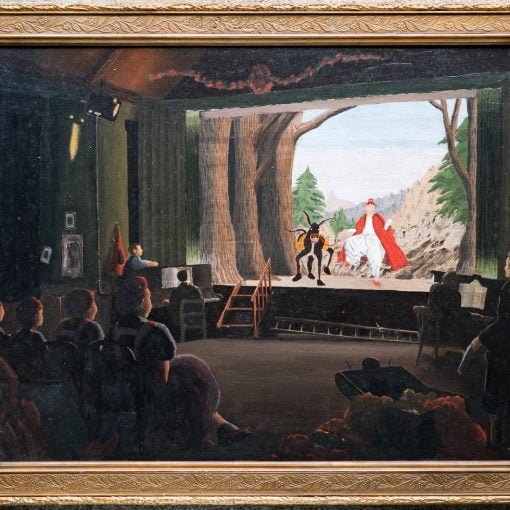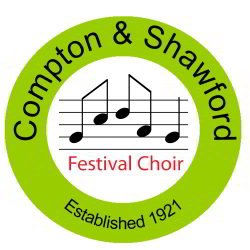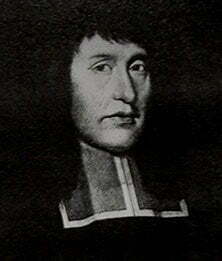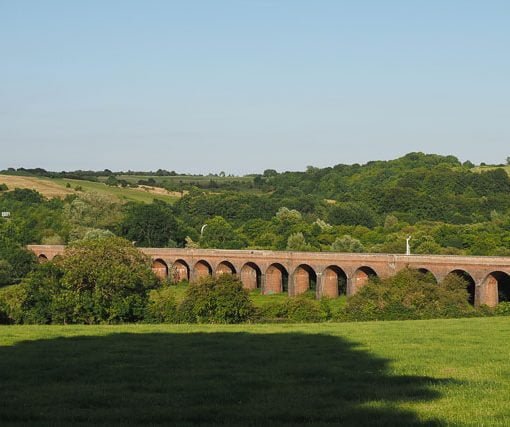Table of Contents
John Philpot
Compton’s martyr, John Philpot, had a colourful career and crossed paths with many other characters with interesting and unusual stories, as we shall see.
-
Detail of the 1917 Philpott window, in the south aisle of Winchester cathedral, second bay from the west.
The window was erected in memory of members of the Philpott family, which has been associated with Winchester and specifically Compton since the 14th century.
The most notable was John Philpot, scholar of Winchester College, and Fellow of New College, Oxford, who became Archdeacon of Winchester in the reign of Protestant King Edward VI.
After Edward’s death, and the brief reign of Lady Jane Grey, Edward’s elder half-sister Mary became queen. Mary had remained Catholic and began purging protestants. John Philpot lost his role as Archdeacon, was imprisoned, interrogated and eventually burned at the stake at Smithfield, for refusing to renounce his Protestant beliefs.
- Inscription below Philpot memorial window in Winchester Cathedral
- The Marytrdom of Mr. John Philpot Arch Deacon of Winchester British Museum Object asset number: 790187001 Reproduced by permission under the Creative Commons Attribution-NonCommercial-ShareAlike 4.0 International (CC BY-NC-SA 4.0) licence http://creativecommons.org/licenses/by-nc-sa/4.0/
- John Philpot after Unknown artist woodcut, published 1563 Reference Collection NPG D5521 © National Portrait Gallery, London Reproduced by permission under the Creative Commons Attribution-NonCommercial-NoDerivs 3.0 Unported (CC BY-NC-ND 3.0) Licence detailed at http://creativecommons.org/licenses/by-nc-nd/3.0/
- Details of Sir John Philipot’s tomb, from the “Catalogue of the tombs in the churches of the city of London, A.D. 1666. By Major Payne Fisher, B.A.” Believed to be free of copyright. Downloaded from https://hdl.handle.net/2027/yale.39002088542148
- John Philpot in Smithfield. From Foxe’s Book of Martyrs, believed to be free of copyright.
Sir John Philipot
The Philpot Family
Sir Richard Whittington
to come
Archdeacon John Philpot
to come
Bishop Stephen Gardiner
to come
Bishop John Ponet
to come
Diocesan Registrar John Cooke (or Cook)
to come
Bishop Edmund “Bloody” Bonner
to come
JS Drew writes:
Whitaker writes:
References
- General
- Oxford Dictionary of National Biography – free access if you have a Hampshire Library card
- Compton near Winchester – being an Enquiry into the History of a Hampshire Parish; J S Drew, published 1939 by Warren and Sons, Winchester
- Compton & Shawford, by Austin Whitaker, ©1985, Published by Barbara Large & Austin Whitaker
- Winchester Cathedral Stained Glass, Mary Callé. Published by the Friends of Winchester Cathedral.
- Lives of Eminent and Illustrious Englishmen, from Alfred the Great to the Latest Times, edited by George Godfrey Cunningham, Vol I 1836, Vol II 1837. Available as an ebook from Google Books, and in hard copy from various sources.
- A History of England in the Lives of Englishmen, Edited by George Godfrey Cunningham, vol. I 1853. Also available as an ebook from Google Books, and in hard copy from various sources.
- Archdeacon John Philpot
- John Philpot, Wikipedia entry: https://en.wikipedia.org/wiki/John_Philpot
- Foxe’s Book of Martyrs John Philpot
- The Examinations and Writings of John Philpot, B.C.L. Archdeacon of Winchester, from Google Play Books
- Christianity.com: Because John Philpot Didn’t Run, He Burned
- Philpot, John (DNB00)
- Sir John Philipot
- Philipot, John (d.1384) (DNB00)
- British History Online : Calendar of Letter-Books of the City of London: H, 1375-1399 – Introduction
- British History Online: the Borough of Scarborough
- The Chronica Maiora of Thomas Walsingham, 1376-1422
- Mercer Millions website: Sir Andrew Mercer
- The Old Scots Navy on Mercer
- Delphi Classics: The Complete Works of Geoffrey Chaucer
- Wikipedia List of Lord Mayors of London
- Geni.com Sir John Philpot, Lord Mayor of London
- Catalogue of the tombs in the churches of the city of London, A.D. 1666. By Major Payne Fisher, B.A
- Sir Richard (Dick) Whittington
- Bishop Stephen Gardiner
- Bishop Edmund Bonner
- Bishop John Ponet (or Poynet)

